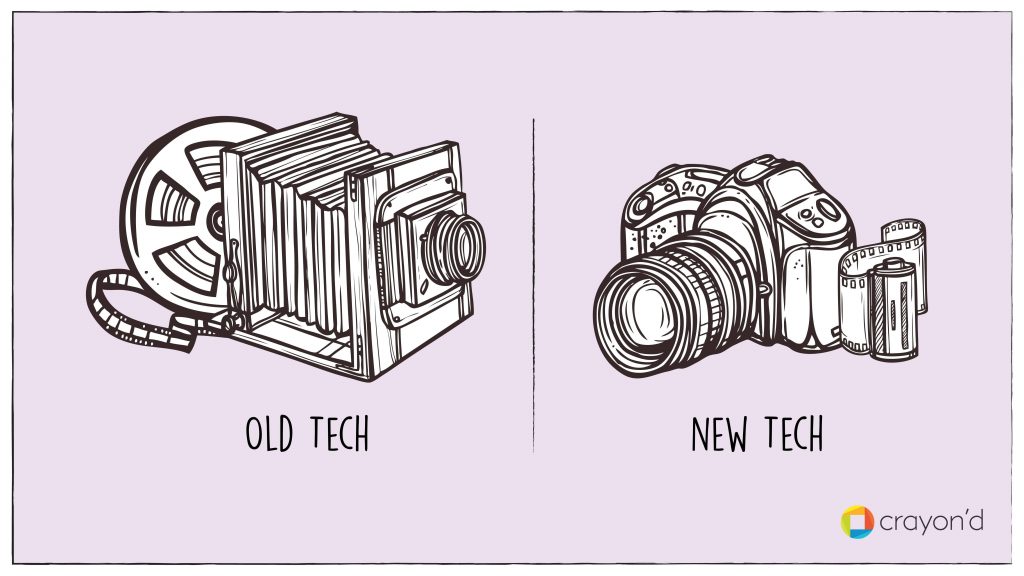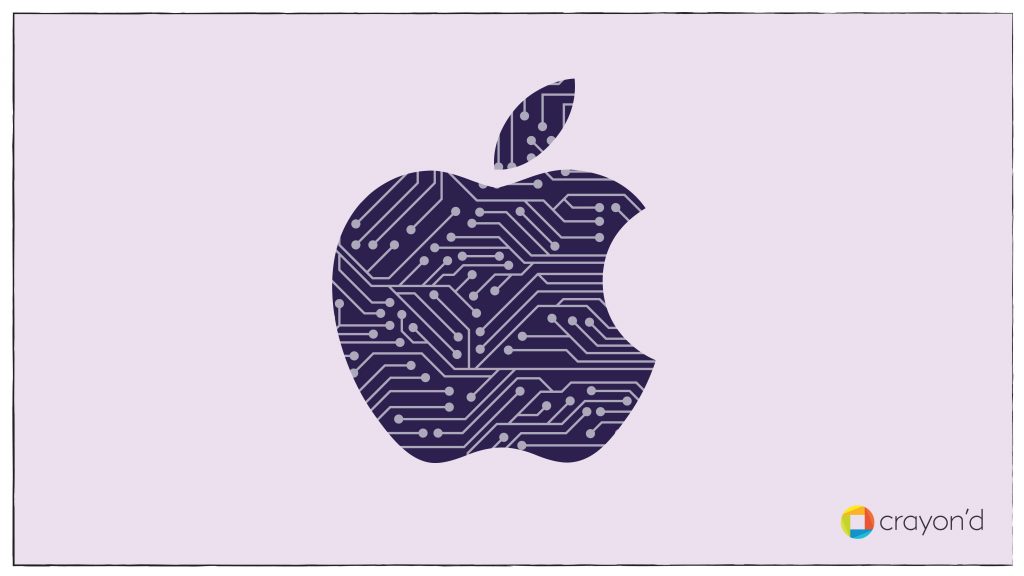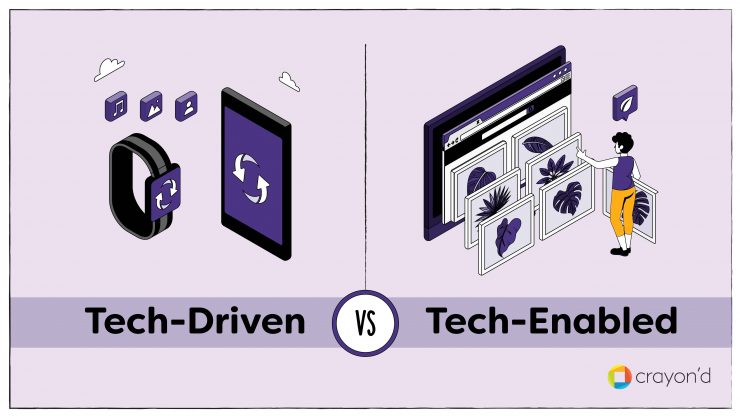The world’s marketplace runs on technology. Every company is associated with it — if you have customers, you have to implement technology.
This implementation has two types.
Consider yourself to be a VC-funded startup with the mission to improve AI. Your product is innovative technology, i.e., you develop new technologies.
Meaning, you are a tech-driven startup.
Let’s look at a different kind of a startup, one that allows users to get food delivered at their doorstep.
The product: leveraged technology, i.e., existing technology is integrated in a platform to provide a particular experience/service.
This is a tech-enabled startup.
Knowing under which type your startup falls is important.
It helps you create a stronger brand proposition & mission and frame effective strategies; overall, a clearer vision that drives your company toward success.
Here, we discuss the key differences between being tech-driven and tech-enabled and how each of them innovate and provide value to users in their own fashion.
Let’s begin.
Tech-driven Startups
A tech-driven startup is one that brings new or innovative technological products/services to the market.
The popularity of the Internet and ubiquity of gadgets, be it personal computers or smartphones, had made tech-driven startups necessary.
Users rely on technology for many of their needs. Education, entertainment, productivity — you name it, and technology runs it.
As the years progress, the needs just increase.
Meaning, there is a lot that still needs to be done and as a tech-driven startup, you are at the helm of innovation.
You are addressing these new needs.
The biggest names in the business — Google, Apple, Facebook, and Microsoft — are tech-driven. Their primary objective is to develop proprietary technology that hooks their users and solves a variety of their needs.
However, they do not cater to every need of the modern customer, opening up opportunities for the aspiring entrepreneur.
To create something of value for your users, you can:
- Build something that does not exist yet
- Innovate existing technologies
Build it new
Winning a competition becomes easier if you get a headstart.
As a company, that means that you get to the playing ground first with a new idea/product previously unheard of.
Getting there first is not a straightforward task.
You’d need to
- Find an unaddressed market-gap
- Have the technical capabilities to impress users, because this is a completely new idea
- Be agile in order to thwart any rising competitors.
Many tech-driven companies taste success for a while and lose out on business when they stray from these parameters.
Consider Eastman Kodak. A pioneer in photography consumerism, Kodak had turned the difficult task of making photos— one photo would take hours of toil— into a mere click. Users could now get a photo with a single click, so much so that a term came in: snapshots.
Kodak was tech-driven because their main value proposition was providing users with technology that was simple to use and took away the brunt of processing the pictures.
However, they weren’t agile enough to cater to digital transformation, ultimately losing business to other giants like Sony.
In a tech-driven business, innovation is the bread and butter. Creating new technologies is the only way to stay afloat, and if you lose that edge and become complacent, then you risk losing the game.
In a tech-driven business, you cannot always bet on previous victories for future successes.

Innovating existing technology
Let’s turn back time for this one. Late 1990s, and among the many new websites that were flourishing due to the PC revolution, was Yahoo! It was one of the leading frontpages of the Internet, where you’d go to find anything you wanted.
During this time, search functionality was quite primitive. Yahoo!, being a directory, based all of its searching capability on its listings. This was neither efficient nor user-friendly.
Now, arrives Google — informally, considering Larry and Sergey were still students — with an algorithm and user interface that simplified the searching experience.
Rather, they created the first-ever proper iteration of a ‘search engine’.
Meaning, they innovated an existing technology.
A tech-driven startup does not have to invent new technologies in order to become successful.
Even within existing markets, there are a lot of unaddressed user-needs that can be tapped into.
For Google, the rest is history. Yahoo! never understood the potential of search engine technology and in the meantime, Google pivoted into becoming highly tech-driven, investing resources into bringing new technologies to the market.
Innovating existing technology takes the same skills as building it new— user-empathy, technical prowess, and agility.
Miss out on any of these and you become a cautionary tale like Yahoo!
ROI of a tech-driven startup
In a tech-driven startup, the focus is on creating new technologies.
This does not happen in a blind undertaking. Users’ needs are researched to ensure that the startup is on track, but innovation is given the priority here.
Meaning, the startup develops a product with enormous technical capabilities and then later narrows down its niche to start selling.
Without proper oversight, this can be highly risky. For companies like Kodak and Google, the market gap was something that they envisioned.
People weren’t in the habit of clicking pictures or using the web regularly. But the founders imagined a time when people would be technologically-empowered, and built to achieve that goal.
All these point to one necessity: as an entrepreneur running a tech-driven startup, you need to have a clear vision that is backed up by feasible hypotheses.
Tech-enabled Startups
A tech-enabled startup is one that brings new or innovative user-experiences using existing technologies to the market.
The Internet has led to revolutionizing efficiency. If something can be done in seconds instead of minutes or hours and if technology can be used to achieve that, then it should be.
This is how tech-enabled products come to life.
A short preview: Online portals of banks, virtual education from universities, and telemedicine are all examples of tech-enabled organizations.
They integrate a variety of technologies to offer their real-life services to their customers on the Internet.
To enable services via technology is to cut queues, make education asynchronous, and increase the reach of good healthcare.
Here is how you can create something of value as a tech-enabled startup:
- Find market-gaps that needs an immediate solution
- Integrate the right tech stack to enable users
- Craft a unique UX that allows them to use the app without any hand-holding
- Be agile to minimize or rise over competition.
The last point is common for both tech-driven and tech-enabled startups. Without agility, you don’t stand a chance to make a dent in the market.
To integrate is to enable
At the core of every tech-enabled startup is the idea of making users’ lives efficient.
Consider Uber. Synonymous to ‘taxis’, Uber took the existing need of hailing a cab and made it much easier and user-friendlier.
Say you arrive at an unknown city and need a cab to drive you to your hotel. Before Uber, you would have to bargain with the driver on the price. If they do not know the directions, then that is another added hassle.
Now, none of that. You land and you book a cab and the Google Maps integration helps the driver to drop you exactly where you want.
As a tech-enabled startup, for Uber or for you, the value that you provide users comes from the UX and its associated optimizations.
And, the whole convenience of finding a cab anytime and not needing to bargain makes the whole ride fun.
This is what tech-enable startups excel at: providing convenience. It is not about innovating technology but about building a platform that lets the user perform a task, that generally would take a lot of effort, with just a few clicks.
Let’s again rewind to the 1990s. A promising businessman, Jeff Bezos, realizes the potential of the Internet: it will be the marketplace of the future.
He decides that he will be on the forefront of that revolution.
What Amazon did is the same. As a tech-enabled startup, it created a portal and a classy user interface to nudge customers to start shopping online.
To make it more attractive, Bezos went on to add a plethora of features, including the now-common one-day delivery and Amazon Prime.
To be tech-enabled is to provide conveniences to the user. For Amazon, that meant telling the user that they can have the bookstore right on their fingertips.
Being tech-enabled brings in a set of different challenges.
You might not be out there to innovate technology but you have to constantly rethink ‘user experience’, improving and optimizing it.
For a tech-enabled product, the UX is never perfect. There is always something that can be added or refined so as to hook the user and make them loyal to your platform.
Pause on that front and you risk letting competitors take your users away.

ROI of a tech-enabled startup
The backbone of a tech-enabled startup is honing the user experience.
There could be a hundred applets running in the background of your tech-enabled product. The key, is to make them all invisible, and highly intuitive for the user.
Unlike a tech-driven startup, a tech-enabled startup thrives on being user-centric. Everything that it does relies on user feedback and the latest insights from market research.
Worrying about technological innovation is not their bread and butter; giving users a smooth, frictionless experience is.
This means that a tech-enabled startup starts by narrowing down on a niche, figuring out its needs, and then building the product.
The risk is low but not absent, because while you might be successful at addressing the need, your technical capability might be average.
Without the proper tech stack and implementation, you cannot win users’ hearts.
This points to a single necessity: For an entrepreneur to be successful at running a tech-enabled business, you need to have the necessary technical abilities to realize your vision.
Blurring the line between tech-enabled and tech-driven
Niches have a lot of market-potential. The more targeted your customer base is, the faster your product gets adopted, which is key to product-market fit.
However, this is just the beginning of the entrepreneurial journey.
When you look at tech giants like Google, Apple, and Amazon, you see organizations that have outgrown their startup notions and have diversified enough to be both tech-driven and tech-enabled.
With the search-engine business and AdSense booming up with profits, Google smartly invested money into other initiatives. A perfect example is Android, which is tech-driven due to its innovative UX, and tech-enabled, as it is powered by other Google products.
Amazon took a clever leap into cloud computing and built Amazon Web Services (AWS), a tech-driven subsidiary that rivals the parent company’s profits now.
Apple revels in its ability to be driven by technological innovations, with its recent announcement of slowing ditching Intel processors in favor of in-house, ARM- based ones.
This is not to say that you need to be both tech enabled and driven in order to be successful.
Your entrepreneurial ambitions can be achieved through either model.
Just know that when you outgrow your current aspirations, you can choose to diversify.

Final words
Building a startup is no easy task.
The challenges are many, risks too high, and responsibilities aplenty.
As an aspiring entrepreneur, skilfully getting through these can become smoother if you understand your own startup.
An organization starts up from a small bud of an idea, which is either driven by tech or just enabled by it.
Once you recognize exactly what that bud would grow into, you can craft effective strategies that enable your startup to thrive.
Your product idea can be highly reliant on technological innovation or it might just require a carefully crafted UX.
Considering that you can build an MVP without any technical skills or hire a digital product agency, you don’t need to wait on your entrepreneurial dreams much longer.
Start now.







Add comment